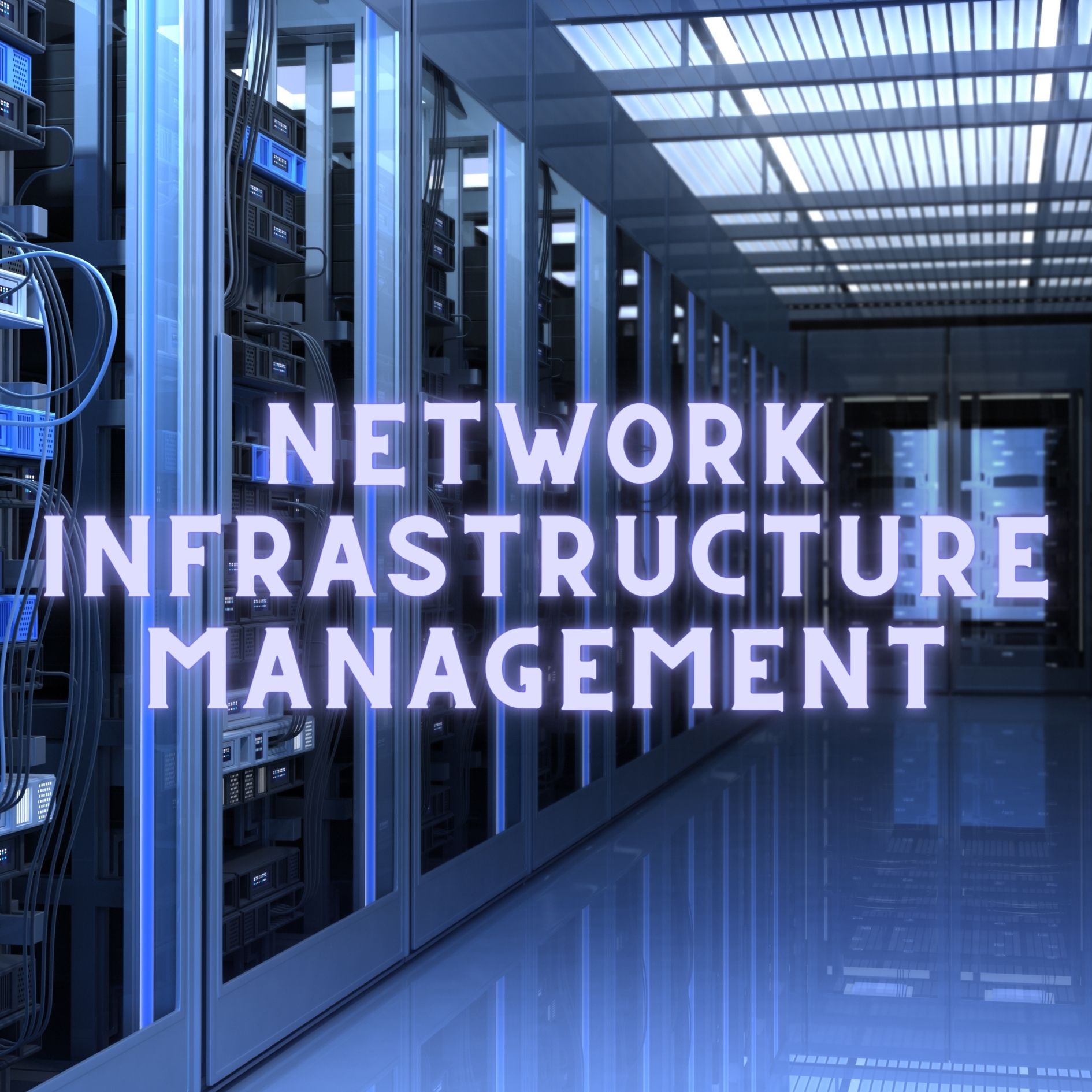With the world becoming increasingly connected daily, managing network infrastructure has become a critical part of any business. A well-managed network infrastructure ensures that businesses can quickly and easily communicate with each other, share data, and access resources. Network infrastructure management involves maintaining, optimising, and securing a business’s network. It includes managing hardware, software, and data centres. This post will provide a complete guide to network infrastructure management, including its types, benefits, and future prospects. Whether you’re a small business owner or a large corporation, understanding the importance of network infrastructure management is crucial for the success of your business. Learn more about network infrastructure management and how it can help your business stay competitive in the digital age.
Introduction
Network infrastructure management is the process of monitoring and maintaining a company’s computer network to ensure it operates smoothly and efficiently. It includes managing hardware such as switches, routers, and servers, as well as software such as firewalls and network protocols. Network infrastructure management is critical to businesses of all sizes as it helps ensure their network is secure, reliable and scalable.
The type of network infrastructure management that a company employs will depend on the size of the company, its budget, and its specific needs. Some companies prefer to manage their network infrastructure internally, while others outsource the task to third-party service providers. Regardless of the approach, it is essential to have a well-defined network infrastructure management strategy in place to ensure the smooth operation of the business.
Network infrastructure management has numerous benefits, including reduced downtime, improved security, increased productivity, and lower costs. By proactively managing the network infrastructure, IT teams can detect and resolve issues before they cause major problems, such as system failures or data breaches. It minimises downtime and ensures that employees can work efficiently without interruptions.
Types
When it comes to managing network infrastructure, several different types of approaches can be used. The most common types of network infrastructure management are centralised, distributed, and cloud-based management.
Centralized management involves having a single point of control for the network, usually through a central server or management system. This approach offers the advantage of having a unified view of the entire network, making it easier to monitor and manage.
Distributed management, on the other hand, involves delegating management tasks to multiple devices or systems across the network. This approach offers greater flexibility and scalability, as devices can be added or removed as needed without disrupting the entire network.
Cloud-based management is a newer approach that leverages the power of cloud computing to manage network infrastructure. With this approach, management tasks are handled by cloud-based software, which can be accessed from anywhere with an internet connection. This approach is highly scalable and accessible from anywhere, making it ideal for businesses with remote workers or multiple locations.
Benefits
Network infrastructure management provides businesses various benefits that help streamline processes, reduce downtime, and increase productivity.
1. One of the key benefits of network infrastructure management is increased security. With the growing number of cyber-attacks and data breaches, it’s important to have a robust security system. Network infrastructure management helps businesses identify system vulnerabilities and implement security measures to protect against potential threats.
2. Another benefit of network infrastructure management is improved performance. By having a well-managed network infrastructure, businesses can ensure that their systems run optimally. It can help reduce downtime and increase productivity, as employees can work more efficiently without being hindered by slow systems or network failures.
3. Network infrastructure management also provides businesses with greater flexibility. As businesses grow and expand, their network infrastructure needs will change. With network infrastructure management, businesses can easily scale their systems to meet their changing needs without investing in new hardware or software.
Components
Network infrastructure management comprises several crucial components for smooth and efficient network operations. These include hardware and software components, network topology, protocols, and security measures.
Hardware components refer to physical devices such as servers, routers, switches, wireless access points, and storage devices that make up the network. Management of these components involves monitoring their performance, capacity, and availability to ensure that they operate optimally.
Software components include operating systems, network management software, and applications that run on the network. Managing software components involves ensuring they are up-to-date, secure, and performing as expected.
Network topology refers to the arrangement of the network components and the connections between them. Managing the network topology involves ensuring that the network is organised in a way that optimises performance, scalability, and reliability.
Protocols are rules and procedures that govern how data is transmitted and received over the network. Management of protocols involves ensuring that they are correctly implemented, configured, and optimised for the network’s needs.
Security measures are essential components of network infrastructure management. Managing the network’s security involves implementing firewalls, intrusion detection systems, and access controls to protect the network from unauthorised access, data breaches, and other security threats.
Tools
For managing network infrastructures effectively, it’s essential to have the right tools in place. These tools can help streamline processes, identify and troubleshoot problems, and improve network performance. Here are some of the most important network infrastructure management tools:
1. Network monitoring tools:
These tools allow you to monitor your network in real time, providing insights into traffic patterns, bandwidth usage, and potential issues.
2. Configuration management tools:
These tools help you manage and track changes to your network configurations, ensuring consistency and minimising the risk of errors.
3. Performance management tools:
These tools help you assess network performance, identify bottlenecks, and optimise network speeds.
4. Security management tools:
These tools help you monitor network activity for potential security threats and vulnerabilities and take action to prevent or mitigate them.
5. Network automation tools:
These tools automate routine network management tasks, allowing IT staff time to focus on more strategic initiatives.
Best practices
For keeping your network infrastructure running smoothly and efficiently, there are some best practices that you should follow. These practices will not only increase the lifespan of your infrastructure but also improve its performance and security.
Firstly, it’s important to have a comprehensive plan for managing your network infrastructure. This plan should include regular maintenance and updates and strategies for upgrading and expanding your infrastructure as your business grows.
Regular monitoring and analysis of your network performance are also crucial. It will help you identify any issues or areas for improvement and ensure that your infrastructure runs optimally.
Another important best practice is implementing strong security measures to protect your network from cyber threats. It includes installing firewalls, anti-virus and anti-malware software, and implementing access controls for your employees.
Documentation is also key to successful network infrastructure management. Keeping detailed records of your network configuration, maintenance, and upgrades will make it easier to troubleshoot any issues that may arise in the future.
Finally, staying up-to-date with the latest trends and technologies in network infrastructure management is important. It will enable you to use new advancements and tools to help you run your infrastructure more efficiently and effectively.
Future
The prospects of network infrastructure management look promising, considering the increasing demand for network services and technological advancement. The introduction of 5G technology has revolutionised network infrastructure management by providing higher bandwidth, lower latency, and higher data rates. With 5G technology, businesses can efficiently manage their network infrastructure by enabling faster and more reliable data transfer, essential for seamless operations.
Moreover, integrating artificial intelligence and machine learning in network infrastructure management systems has made it possible to automate network operations, thus reducing the workload on network administrators. These technologies can monitor network traffic, detect anomalies, and predict network failures, enabling proactive maintenance.
Challenges
Managing network infrastructure can be daunting for any organisation, and some common challenges come with it.
1. One of the biggest challenges is ensuring the network’s security. With the increasing number of cyber-attacks, it is essential to have a robust security system in place to protect the network from any unauthorised access. It includes implementing firewalls, intrusion detection systems, and other security protocols to safeguard the network.
2. Another challenge is the complexity of the network infrastructure. With the growing number of devices, applications, and data, managing and maintaining the network infrastructure can be challenging. It requires a skilled IT team that can handle the complexity of the infrastructure and ensure that all components work together seamlessly.
3. Scalability and flexibility are additional challenges organisations face when managing their network infrastructure. The network must also scale as the organisation grows to accommodate new devices and applications. It requires careful planning and upgrading of the network infrastructure to ensure it can handle the increased load.
4. Finally, managing network infrastructure can be costly. Organisations must invest in the latest technology, hire skilled IT professionals, and maintain the infrastructure. It can be a significant financial burden for any organisation, particularly small and medium-sized businesses.
Conclusion
In conclusion, network infrastructure management is essential for any organisation that relies on technology to achieve its goals. It involves managing the hardware, software, and services that comprise the network infrastructure to ensure a stable and secure environment supporting the organisation’s operations.
By implementing effective network infrastructure management practices, organisations can experience various benefits, including increased productivity, improved security, better reliability, and reduced costs. However, choosing the right type of network infrastructure management is important based on the organisation’s specific needs and goals.
Looking to the future, we can expect continued advancements in NIM technologies, including the increased use of automation and artificial intelligence. These developments will help organisations to further optimise their NIM practices and stay ahead of the curve in an ever-evolving technological landscape.
Visit our website to know more!
Follow us on LinkedIn:


